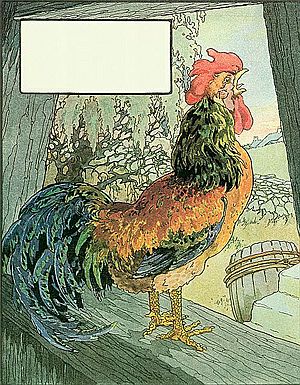Frederick Richardson facts for kids
Frederick Richardson (born 1862 – died 1937) was an American artist. He was an illustrator who drew pictures for many books in the late 1800s and early 1900s. He is best known for his drawings in books by L. Frank Baum, who wrote The Wonderful Wizard of Oz.
Becoming an Artist
Frederick Richardson was born in Chicago. He studied art at the St. Louis School of Fine Arts. He also went to the Académie Julian in Paris, France.
Later, he taught art at the Chicago Art Institute for seven years. Some of his students included Albert Henry Krehbiel and Dulah Evans Krehbiel. Richardson was known for his art style, which was influenced by the Art Nouveau movement.
Starting around 1892, Richardson worked as a newspaper illustrator. He drew many pictures for the Chicago Daily News. He even drew scenes from the famous World's Columbian Exposition in 1893. His newspaper employers thought his work was so good that they sent him to Paris. He went there to cover the Exposition Universelle Internationale, which was a big world's fair in 1900. A book of his newspaper drawings was published in 1899.
Illustrating Books
In 1903, Richardson moved to New York City to focus on drawing for books. His first book project was Queen Zixi of Ix by L. Frank Baum. This story first appeared in St. Nicholas Magazine in 1904 and 1905. The book version came out in 1905.
Richardson also drew pictures for Baum's story "A Kidnapped Santa Claus". This story was first printed in The Delineator magazine in December 1904. His artwork also appeared in a school textbook called the California State Series "Third Reader."
After these first projects, Richardson illustrated many other books. He drew pictures for classic tales like those by Hans Christian Andersen and Aesop's Fables. He also illustrated Mother Goose, Pinocchio, and East of the Sun and West of the Moon. He even contributed to two books in Andrew Lang's Fairy Books series.
Richardson did a lot of work for a publisher in Chicago called P. F. Volland. For some books by Georgene Faulkner, he changed his drawing style. For example, he used a Japanese art style for Little Peachling and Other Tales of Old Japan (1928). He used an Indian art style for The White Elephant and Other Tales from Old India (1929).
He also provided drawings for a series of schoolbooks called the Winston Readers. Other books he illustrated include The Queen's Museum (1906) by Frank R. Stockton. He also drew for The Enchanted House (1913) by Edith Ogden Harrison. Another book was The Red Indian Fairy Book (1917) by Frances Jenkins Olcott.
During the Great Depression, Richardson created many illustrations for the Works Progress Administration. This was a government program that helped people find jobs.
In 1934, Richardson drew pictures for a book called The Revolt Against Beauty. In this book, he made fun of the art styles of famous painters like Paul Gauguin and Vincent van Gogh. He also parodied characters from newspaper comic strips.
Frederick Richardson passed away in 1937 from pneumonia in New York City. After he died, a special book was published in his memory. It featured traditional stories like "Three Billy Goats Gruff" and "The Bremen Town Musicians" with his colorful illustrations. He was survived by one of his two sons, Allan Barbour. His older son, David Welles, had passed away a few months before him.


